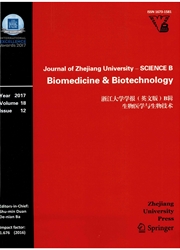

 中文摘要:
中文摘要:
以便更好理解 biatrial 传导,调查各种各样的传导小径,并且比较在人的正厅的各向同性、各向异性的导体之间的差别,我们在场 biatrial 传导与的模拟研究用一个最近发达的人的 atrial 模型知道 / 假设传导小径。除了已知的小径:(1 ) Bachmanns 捆(BB ) ,(2 ) 窝 ovalis (LFO ) 的异色边缘,并且(3 ) 冠的湾穴(CS ) ,我们也在那里假设那存在连接冠 terminalis (CT ) 的二快传导捆, LFO,和 CS。我们的模拟证明这些快传导的使用在与试验性的数据一致的一个传导模式绑结果。比较各向同性并且在 BB 案例中的 anisotropoic 导体证明工作的 atrial 肌肉在传导时间和传导速度有小效果,尽管在各向异性的传导分配的传导性比各向同性的传导高二~四倍。在结论,我们建议假设 intercaval 捆在 biatrial 传导起一个重要作用并且 myofiber 取向比工作的 atrial 在传导系统上有更大的效果肌肉。这研究与新卓见介绍读者进人的 atrial 传导。
 英文摘要:
英文摘要:
In order to better understand biatrial conduction, investigate various conduction pathways, and compare the differences between isotropic and anisotropic conductions in human atria, we present a simulation study of biatrial conduction with known/assumed conduction pathways using a recently developed human atrial model. In addition to known pathways: (1) Bachmann's bundle (BB), (2) limbus of fossa ovalis (LFO), and (3) coronary sinus (CS), we also hypothesize that there exist two fast conduction bundles that connect the crista terminalis (CT), LFO, and CS. Our simulation demonstrates that use of these fast conduction bundles results in a conduction pattern consistent with experimental data. The comparison of isotropic and anisotropoic conductions in the BB case showed that the atrial working muscles had small effect on conduction time and conduction speed, although the conductivities assigned in anisotropic conduction were two to four times higher than the isotropic conduction. In conclusion, we suggest that the hypothesized intercaval bundles play a significant role in the biatrial conduction and that myofiber orientation has larger effects on the conduction system than the atrial working muscles. This study presents readers with new insights into human atrial conduction.
 同期刊论文项目
同期刊论文项目
 同项目期刊论文
同项目期刊论文
 Fibroblast proliferation alters cardiac excitation conduction and contraction: a computational study
Fibroblast proliferation alters cardiac excitation conduction and contraction: a computational study Excitation-Contraction Coupling between Human Atrial Myocytes with Fibroblasts and Stretch Activated
Excitation-Contraction Coupling between Human Atrial Myocytes with Fibroblasts and Stretch Activated Simulation of biatrial conduction via different pathways during sinus rhythm with a detailed human a
Simulation of biatrial conduction via different pathways during sinus rhythm with a detailed human a An Image-Based Model of the Whole Human Heart with Detailed Anatomical Structure and Fiber Orientati
An Image-Based Model of the Whole Human Heart with Detailed Anatomical Structure and Fiber Orientati A new magneto-cardiogram study using a vector model with a virtual heart and the boundary element me
A new magneto-cardiogram study using a vector model with a virtual heart and the boundary element me Fibroblast proliferation alters cardiac excitation conduction and contraction: a computational study
Fibroblast proliferation alters cardiac excitation conduction and contraction: a computational study Fibroblast proliferation alters cardiac excitation conduction and contraction: a computational study
Fibroblast proliferation alters cardiac excitation conduction and contraction: a computational study Fibroblast proliferation alters cardiac excitation conduction and contraction: a computational study
Fibroblast proliferation alters cardiac excitation conduction and contraction: a computational study Preliminary Simulation Study of Atrial Fibrillation Treatment Procedure Based on A Detailed Human At
Preliminary Simulation Study of Atrial Fibrillation Treatment Procedure Based on A Detailed Human At 期刊信息
期刊信息
